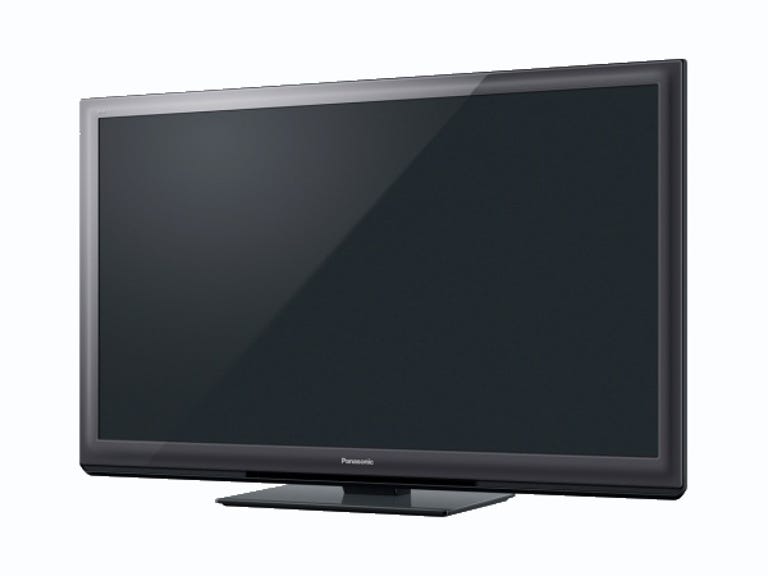 Why You Can Trust CNET
Why You Can Trust CNET Panasonic Viera ST30 (TX-P50ST30B) review: Panasonic Viera ST30 (TX-P50ST30B)
The Panasonic ST30 may lack some of the extra frills found on its more expensive sisters, but it still delivers superbly cinematic pictures no matter whether it's working with 2D or 3D content.
Panasonic's 2011 3D plasma line-up is split into three different series. At the high end there's the flagship VT30 series, next comes the mid-tier GT30 series, while the ST30 series slots in at the bottom and is the cheapest of the bunch.
The Good
The Bad
The Bottom Line
We managed to get our mitts on the 50-inch TX-P50ST30B, which is available for around £1,300 online, to see how it stacked up against Panasonic's more expensive plasma offerings.
Lagging behind
The most obvious difference between this and the higher-end models is the design. Panasonic's newer designs found on the VT30 and GT30 TVs are a major improvement on last year's models thanks to the narrower bezel and cleaner, more angular look. The ST30 has to make do with the older, more boring design and has a noticeably thicker bezel. It's not exactly ugly, but it does look rather dull and is nowhere near as classy in appearance as LG's plasmas, for example.
On a plus note, Panasonic has made the bottom of the chassis slightly thicker than the middle and top to accommodate larger down-firing speakers. This really helps to improve the set's audio with the result that the ST30 has better mid-range and bass performance than most of its rivals, which is a huge help when it comes to more bombastic movie soundtracks.
While the ST30 does have a Freeview HD tuner, it lacks the freesat HD support of the VT30. Nevertheless, Freeview HD still offers a decent line-up of HD channels, including BBC One HD and ITV HD.
Connection options are pretty generous too, with four HDMI ports, a full-sized Scart socket and a set of component inputs. There are also two USB ports for digital media playback as well as an SD card slot that can be used to view 3D material shot on Panasonic's 3D stills and video cameras.
Online all the time
The rear is also home to an Ethernet port, and you can connect via Wi-Fi if you go for the optional USB Wi-Fi dongle. Once connected to your home network, you can make use of Panasonic's new Viera Connect Internet platform. Previous Panasonic sets lacked proper BBC iPlayer integration -- it was available via the red button when you used the satellite tuner, but not if you only used the Freeview HD tuner. Thankfully iPlayer is now properly integrated into the Viera Connect menu.
There are also a number of other services, such as the AceTrax movie on-demand offering as well as Facebook, Twitter and Picasa. The range of content isn't as good as Sony's offering, but we think most people will mainly want it for iPlayer and at least it's properly integrated now.
It's something of a letdown that Panasonic has removed support for DLNA on this model, so it can't be used to stream digital media files across a home network from a PC or NAS drive.

The ST30 has plenty of tricks up its sleeve when it comes to image processing, though. Along with Panasonic's Intelligent Frame Creation there's also support for 24p Smooth Film as well as the company's Resolution Enhancer. It has no problems dealing with standard-definition material, doing an excellent job of upscaling even poorer quality Freeview channels to the panel's native 1080p resolution, without softening the image or introducing too many processing artefacts.
HD hero
We also reckon HD material looks every bit as crisp and sharp as it does on the GT30 and black levels are on a par with that model too, which is great news, as the GT30 was no slouch in this department. For the ultimate in black-level performance the VT30 is still out ahead, which is understandable given it's the premium option.
Nevertheless, when you flick to the True Cinema preset and put on a good quality Blu-ray movie, you'll be treated to a startlingly rich combination of contrast, colour and detail, as the ST30's pictures really are breathtakingly beautiful.
There are a couple of minor complaints, however. Every now and again you can see some banding -- stepping in colour gradation between areas of similar colour hues. That said, all plasmas suffer from this problem to one degree or another and the ST30 handles it better than most. And while it won't concern most people, it's worth pointing out that the ST30 lacks the ISF calibration tools and THX certification you get on the two higher-end models.
When it comes to 3D you'll have to shell out separately for the active 3D glasses, as none are provided as standard. Glasses cost around £130 each, so that's going to add up to over £500 for an average family of four. Nevertheless, 3D performance is top-notch. The almost complete absence of 3D crosstalk means there's little to distract you from the immersive sense of depth and despite the dimming effect of the glasses, images still retain a powerful punch.
Conclusion
All in all, the ST30 is a very impressive set that is in many ways a match for the more expensive GT30. If you don't care about DLNA networking support, and can live with the slightly duller design and lack of ISF tools and THX certification, you'll see picture quality every bit as good as the GT30 while saving yourself over £200.
Edited by Nick Hide


